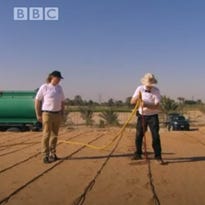5 Ways That Markets (not governments, nonprofits, or philanthropies) are Financing the Earth’s Regeneration Right Now
Investment Capital Seeking Nature-Based Climate Solutions
We are used to seeing profitable business models for technology and mechanical systems. For example, a couple of engineers invent and patent a machine that draws carbon out of the air. They secure venture capital funding and form a company (like Carbon Engineering) to produce and operate their machines. Voila! A business is born. This model of business formation is familiar.
We are not so used to business models for natural systems, and often assume that planting trees or regenerating farm or ranch lands can only be done by government or philanthropic spending programs. But profitable enterprises are being created around nature-based climate solutions. Furthermore, what is driving these ventures is not just nature regeneration advocates making a pitch for capital investment. It is, rather, the market force of capital seeking investments in nature for financial returns while also mitigating climate change.
Here is a list of five funding mechanisms, plucked from a stream of innovative financial instruments, that are bringing market forces to bear on nature-based climate solutions: 1) Carbon market tech (high and low) venture capital, 2) Investment funds, 3) Low interest loans, 4) “Off-take” or “Land to Market” agreements, 5) Crowdfunding.
1. Carbon Market (Hi and Low)Tech
One well underway idea is to create carbon markets, and then to generate revenue by selling carbon credits. Tree planting and regenerative agriculture sequester carbon in soil and trees. The business proposition is to measure the carbon and sell carbon credits to companies or others that want to offset their carbon footprints.
Hi Tech entrepreneurs have drawn venture capitalists to this solution through investments and innovations in blockchain (for recording carbon trading transactions), drones (for dropping tree seed balls and for surveying agricultural or forested land), artificial intelligence (to process data gleaned from drones and satellites), and a variety of techniques to assess and verify carbon retention and soil regeneration so that credits can be based on verified outcomes.
Low tech’s creative innovations are also producing solutions for regenerating soil and forests. The Land Life Company innovated a biodegradable “cocoon” that improves the rate of tree seedling survival. (cocoon). The company describes the advantages of its invention and claim a seedling survival rate of 75-95%.
The Cocoon is designed to support a seedling by providing water and shelter while stimulating the seedling to produce a healthy and deep root structure, tapping into the sub-surface water supply. The result? Independent, healthy trees not reliant on external irrigation that can survive in harsh conditions.
Another lo tech solution is a patented, special clay that is sprayed on desert sand turning it into porous soil capable of retaining water and supporting plant growth. ( desert control nano clay).





